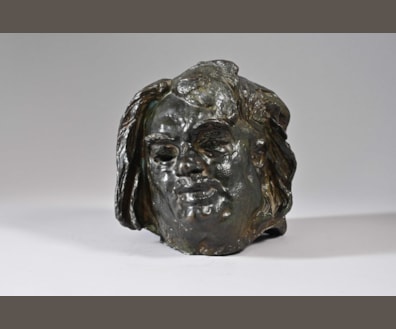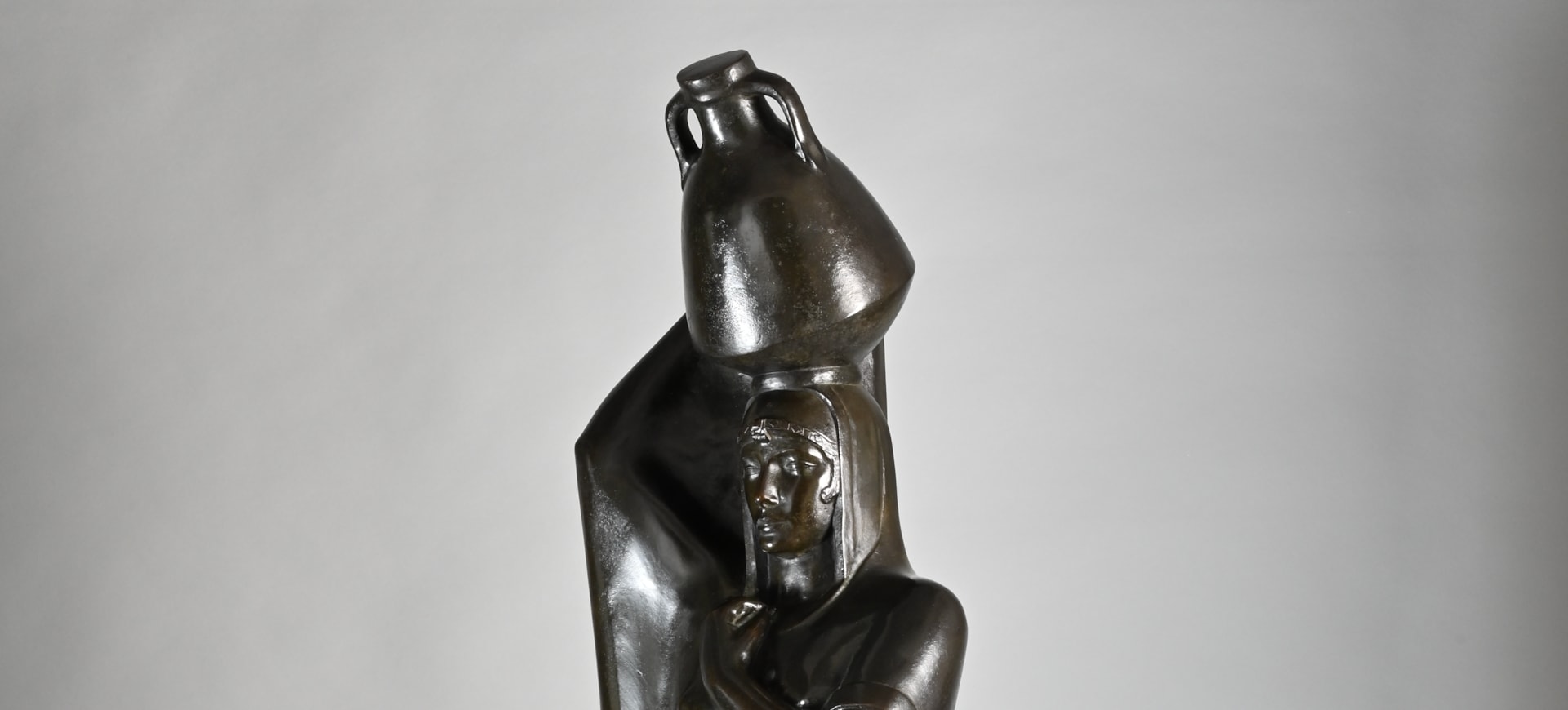
Mahmoud MOKHTAR
( 1891 - 1934 )
AL A SHAT ELNIL ou "Au bord du Nil" (1927-1929)
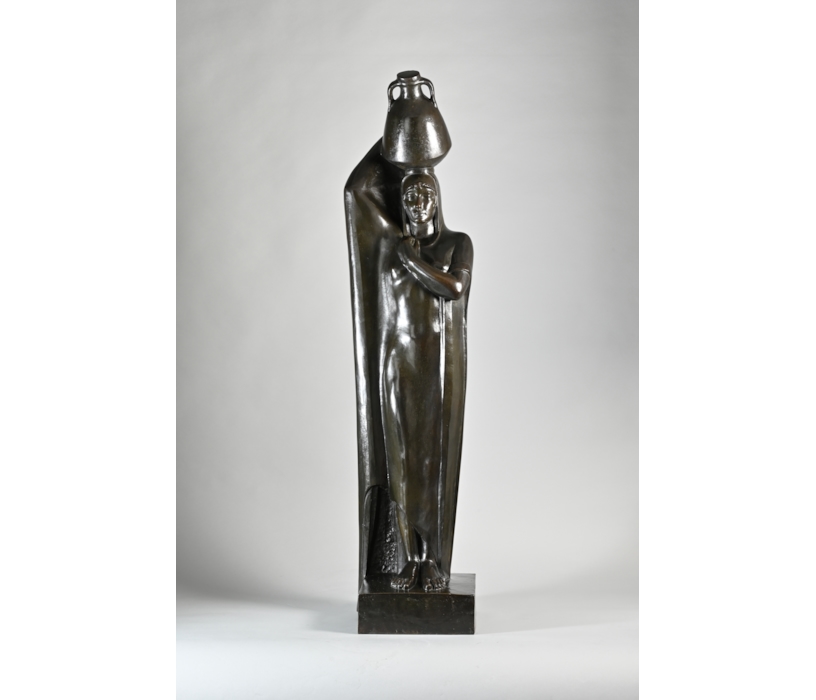
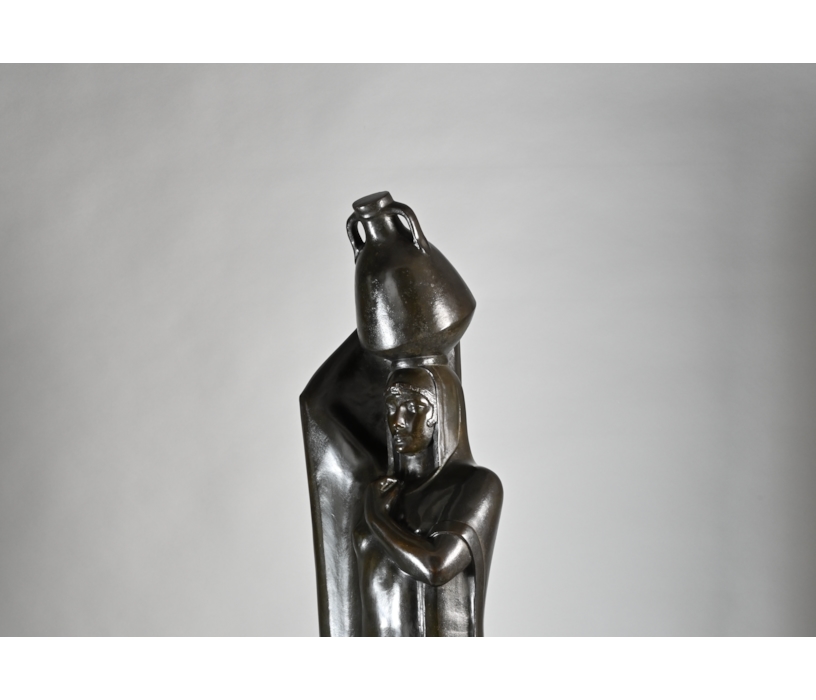
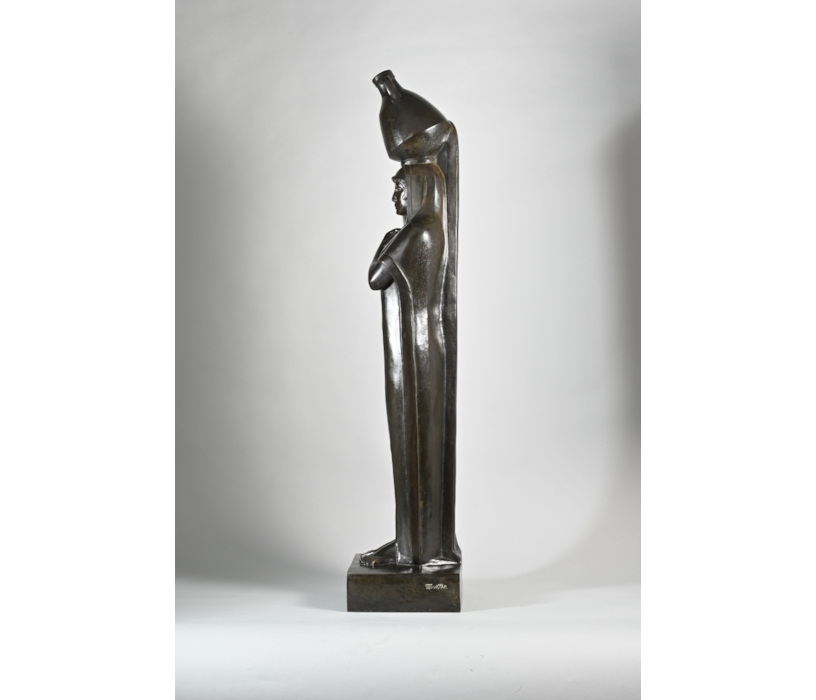

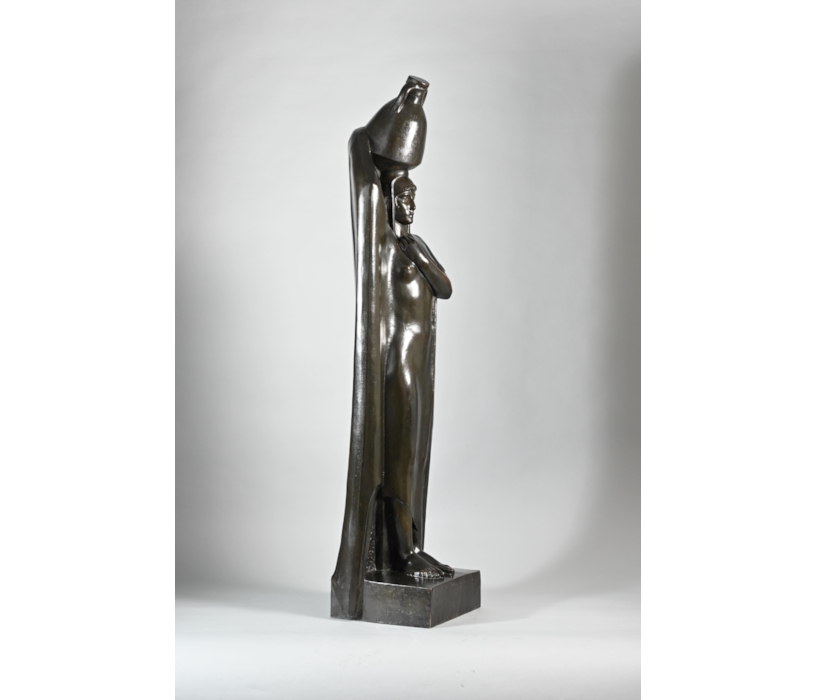

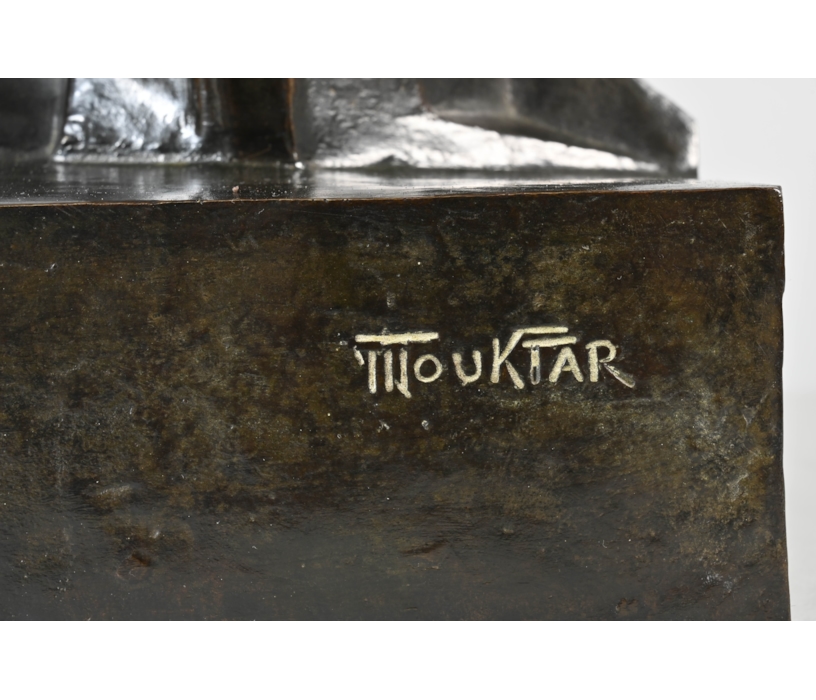
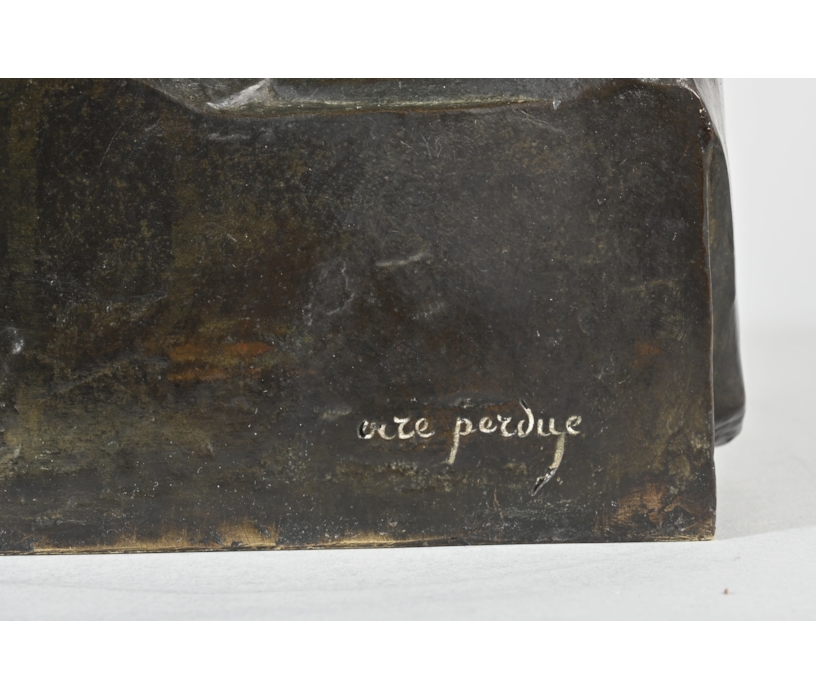

Mahmoud MOKHTAR
( 1891 - 1934 )
AL A SHAT ELNIL ou "Au bord du Nil" (1927-1929)
Bronze, richly shaded dark brown patina
H : 118,5 cm, L : 30 cm, D : 27 cm
Lifetime cast signed "Mouktar", "Susse Frères. Éditeurs Paris" and "cire perdue" details, with inserted pastille (without the "Bronze" stamp) on the edge of the base. Six examples cast this first and highest reduction between 1931 and 1939, with 5 lifetime casts including this one numbered "4"
Circa 1933-1934
Detailed Description
Mokhtar's vision is the result of long observation: the long draperies subtly reveal the silhouette and play with the light, while the balanced jars lean slightly over the twisted seat, as shown in shots from this period.
Mokhtar produced several representations of this theme, such as the group of 3 figures in granite, Le Retour de la rivière (1928), whose central woman is similar to our subject in her posture. There is a large stone copy of this subject, exhibited at the Galerie Bernheim Jeune in 1930, an exhibition devoted to the artist in which numerous busts were shown, as well as a large stone example of La Fiancée du Nil.
"M. Moukhtar has returned to the shepherds of the delta, to the women draped in traditional veils, whose regal bearing and hieratic gestures have remained unchanged for a hundred centuries. It's still the water carriers, the amphora on their heads, bringing up from the banks of the Nile, with the rhythm of slow marches, the bathers on whose young bodies the wet wool is plastered. These peasant women are not the sisters of the heroic, grandiose statues, guardians of the deserted temples, but rather of the long, smooth figures that the pharaohs took to their tombs to guard the image of life".
Jacques Baschet for l’Illustration on March 15 1930.
The bronze edition continues the illusionistic play of light on the surface in the manner of ancient polished stones such as granite or basalt. Au bord du Nil is available in 4 distinct sizes: H. 180 cm /H. 120 cm / H. 80 cm / H. 40 cm.
Only 6 examples were cast by Maison Susse in the 120 cm size, 5 period, one posthumous.
Our lifetime cast has a beautiful brown patina, the signature enhanced with white and the number “4” affixed to the tool, presumably for the 4th example.
You may also like





